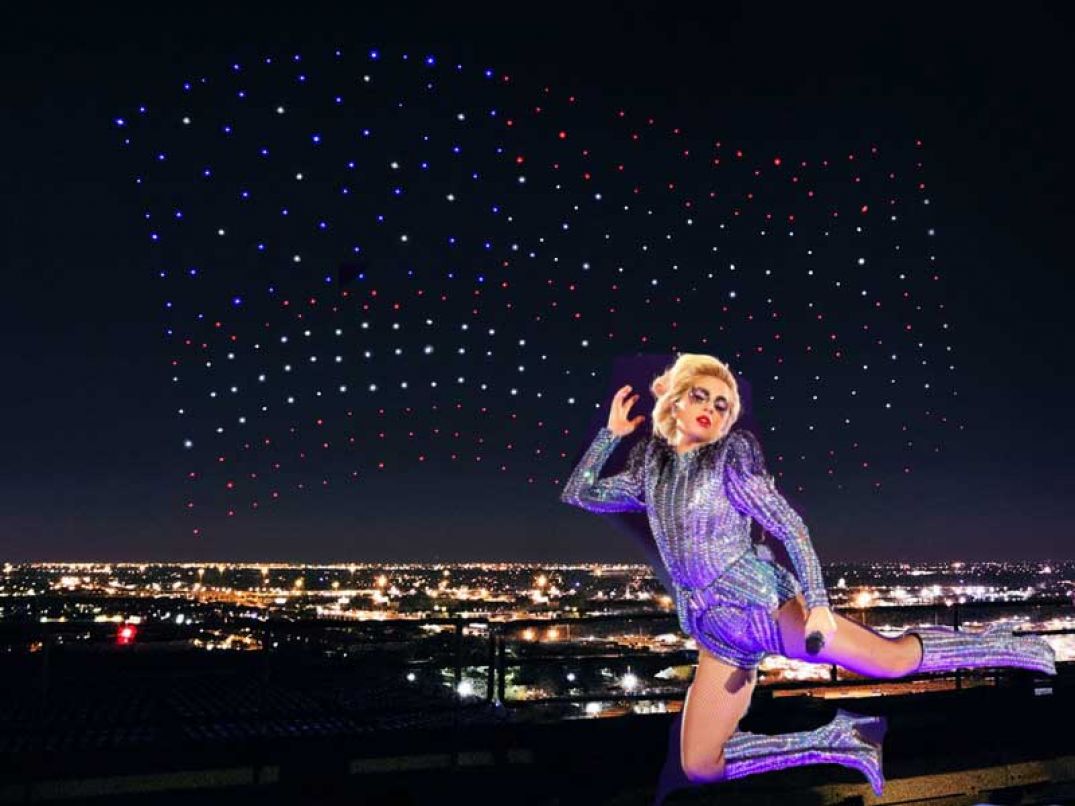
Robohub.org
Lady Gaga, 300 Intel drones, and the Super Bowl
Three hundred drones flashed their colored lights and created a flying American flag as Lady Gaga sang a blend of “God Bless America” and “This Land Is Your Land” to 160 million viewers of the Super Bowl. Oh, and two football teams played into overtime, and the final score was 34 to 28.
Intel, Disney and ARS Electronica were all involved in the development of the drones, software and content. But because of restrictions by the FAA, the drones didn’t actually perform during the Super Bowl half-time show. They were actually filmed earlier, sync’d into Lady Gaga’s song as background, and appeared on all the monitors as though they were really there overhead.
All the tech media seemed to be in a huff because of the FAA restriction, but the spectacular effect of 300 drones creating America’s red, white and blue flag (and, in a 10-second ad after the game, the Pepsi and Intel logos as well), was reason enough to review the details of how it all worked and who did it.
The “Shooting Star” drones by Intel are a foot across and weigh just eight ounces to soften impacts. Each is equipped with a special LED that can produce four billion color combinations. The performance was coordinated by a central computer that can do unlimited UAV animations in three dimension. Intel recently set a world record by flying 500 of them together (video below) and said “we hope this experience inspires other creatives, artists and innovators to really think about how they can incorporate drone technology in new ways.” The sophisticated algorithms even check the battery levels and assign lesser roles to weaker drones — if one should drop out, a reserve unit automatically takes its place within a few seconds.
The Intel folks produced this video which describe the process:
tags: c-Events, drones, Frank Tobe



